#yada yada hi dharmasya
Explore tagged Tumblr posts
Text
"Yada Yada hi Dharmasya Glanir Bhavati Bharata Abhuthanam Adharmasya Tadad Manam Srijamyaham Paritranaye sadhunam Vinashaya cha dushkritam Dharmsansthapanrthayam sambhavani yugay yugay"
With all that is going rn, i think this is gonna happen soon,
140 notes
·
View notes
Text
Krishna (mystery academia)
I was inspired from that old Vishnu post and that Delhi vala post so here we go. No idea how this will turn up though par dekhte hain.
No, it can't be a dream. You have pinched yourself twice, and your sister has been calling your name out from the past five minutes, but you can't help yourself. Your eyes are transfixed at that giant grey cloud hovering majestically in the sky. A face is etched on the cloud. He looks enchanting.
Your books have fallen on the floor. A mysterious flute tune rings in your ear. You haven't heard it anywhere recently, but the melodious tune starts to grow too loud. Look carefully, who is the girl in a pink saree, her golden bangles blind your vision and you hear a boy's sweet laughter before your legs give out.
It's Janmashtami night. The clock struck 12 and kids from your society broke the pot. They jump around in getting some money from the dahi handi while the adults clap and call their kids to come home. Everybody chants jai shri krishna and bows down folding their hands. You too close your eyes. Once you raise your head to look at the Krishna murti, your eyes see a person standing behind the murti, twirling a flute with his nimble fingers. Someone snaps their fingers beside your ear. The figure vanishes.
'yada yada hi dharmasya glanir bhavati bharata abhyutthanam adharmasya tadatmanam srijamyaham' Goosebumps rise on your skin and a divine vision graces your being. The sun and the stars collide, but everybody keeps breathing. The sound of a conch fills your mind and you see someone larger than any human, than any other organism on earth stand in a battlefield. He looks fierce once and then in a blink turns as calm as a river.
'paritranaya sadhunam vinashayacha dushkritam dharma sansthapanarthaya sambhavami yuge yuge' Tears flood down your eyes as you wake up from yet another dream of this all pervading misery encircling the world that has given itself to crimes and murders, forgetting that the quest for lust, greed, pride and ruthless power has gone in vain. Once again you stand on a battlefield witnessing hundreds and thousand of mighty warriors flanked by their elephants and horses. On your side stands one man. Just one man -- wielding a chakra and a large mace. He charges off at every soldier. In seconds bodies pile up on the battlefield and a guttural cry pierces your ears. The lone warrior clutches every fallen body and weeps.
The sweet smelling fragrant chandan makes you smile. The old temple priest, a gentle soul patiently applies tilak to all the devotees. After ten people comes your turn to apply the tilak. The priest's eyes brighten as if he has known you since long. You don't know him. This Krishna temple is far away from your home. The priest looks back at the beautifully decorated Krishna murti and smiles. You blink and turn your eyes to a pillar beside the garbhagriha. There stands a boy too gorgeous to be real, a form so enchanting that it etches itself on your eyes. You feel your heart thumping as the fragrant chandan clouds your senses. You are about to fall, but that lovely looking boy catches you in his arms. Flowers fall on your head and a sweet voice whispers, "Will you finally come back, sakhi?"
The night sky is full of stars tonight which is highly unusual for this busy city. Two stars gleam the brightest. You try to figure which constellation they belong too until hundreds of stars come together forming an image of a peacock feather.
At Prem Mandir in Vrindavan, you eagerly watch all the moving sculptures showing different pastimes of Krishna. Somewhere nearby, a group of ladies are singing Meerabai's songs. Your feet tap on their own accord and you feel yourself sway. When did you raise your arms to the sky and twirl? Nobody knows. Your family watches you laugh and dance in the temple. You look at no one but Krishna. The handsome boy from the temple is back again wearing bright yellow clothes -- not too hard to miss. A rough shake on your shoulders makes you open your eyes. The devotees in the temple are staring at you, but you blush in awareness of a certain dark one looking at you.
You sit gazing at the cool waters of Yamuna, the river which played an important role in Krishna's life. She saw his arrival into Gokul and his departure to Mathura. The texts and the old say that she later accompanied him as his wife to Dwaraka. You bow your head at her and dip your feet into the water. Nobody is at the ghat, it's all quiet and peaceful. Yamuna cools your body and a sense of calmness pervades your mind. You feel yourself slipping somewhere. The river like a gentle mother's touch touches your skin. "Do not fear, friend."
The car is about to cross the borders of Vrindavana. You feel your heart cry for an unknown separation. All these nights, you heard female voices whispering, "do not leave." At dawn you woke up with the sounds of a flute and sometimes your evenings were blessed with a boy gracing your hotel's terrace at sunset. He carried a peacock feather with him. You never shared a word with him nor did he with you. The steep silence yet felt comfortable.
Should I stay? Should I go? Should I call that boy and say goodbye, but how do I find him? What is this feeling in my heart? I feel it break into pieces. The driver caught your eye in the mirror and you hear a screeching break, The small flute replica hits the backside of the mirror and there you see a divine view once again.
Surrounded by cows, his feet crossed, he stands with a flute donning yellow garbs. You see the sun and the moon in his eyes. The universe gleams in his limbs. He appears magnificent. The divine sound of the conch rings again and you fall at his feet. 'I am all yours, Shyam.'
'Glad to have you back finally sakhi...' Red palms touch your forehead and the figure in front shines with bright white light like a halo around him. A lotus flower is placed on the last page of your book over Krishna's photo. The afternoon sky is now grey and far away you see a dark cloud emerging towards you.
"It shall start again, isn't it?"
Tagging the sakhis: @sanskari-kanya @shut-up-rabert @krishna-sahacharini @ketchup-jar-ka @arachneofthoughts @jessbeinme15 @ma-douce-souffrance @tumhari-bhairavi @manwalaage @inexhaustible-sources-of-magic @reallythoughtfulwizard @bambioleo @morally-gayy @krishna-priyatama @kaal-naagin
313 notes
·
View notes
Text
The Awaited Return

A piercing scream echoed through the night, slicing through the pin-drop silence of the night. Just then, a girl's limp body is dumped in an alleyway, bruised and broken, by 2 men, no, demons, dressed as humans. They laugh around, while one of them land a kick to the girl's stomach, as she breathes her last. Her last prayer to her murlidhar, Oh Kanha, when will you return? You will avenge me, right? And so, she dies, remembering her murlidhar.
A little girl, barely 5 years old, clutches her Krishna plushie, as the demon, whom she calls baba strangles her maa. She stares at her maa, with her knees curled up to her chest, fingers tightly clutching the Krishna plushie, tears brimming at the corners of her eyes. Then, with a call for her giridhar , her mother breathed her last. The devil's eyes then dart to his daughter, his own flesh and blood, as he strangles his little daughter, to death. Even in death, the little girl, clutched her Krishna, as her body turned blue, just like her gopal.
In a lone classroom, a girl, no, not a girl, a student, barely 15 years old, cries, while clutching her mouth, to muffle her screams, as the devil, dressed as her guru does unspeakable horror to her. She, who only wanted to make her parents proud, herself proud. She, who only wanted to do better, now laid there, feeling dumb, feeling betrayed. What is her fault? She trusted a devil, dressed as a man. She goes home, rubs herself raw in the shower, while she cries to her kanha, How will long will you make us wait, kanha? Please return.
A woman, holds the knife in one hand, shaking tremendously, as tears drip down her eyes. Her phone buzzes continuously, but she doesn't dare open them. Who would want to see themselves being called disgusting and vile names? What was her fault, one might ask. Her fault was, she trusted a man, a friend, rather, a devil. She slices her wrist, does the unthinkable. I apologize Kanha, I apologize. I just couldn't save myself, without you in this world.
Then, the fateful night came. The night was dark, not a single star in the sky. The rain pouring, the winds blowing, it resembled that fateful day. An old, feeble woman, in her 80s thought, woh aarahe hain aaj, with a smile on her face, as she put a garland over her murlidhar's murti. The reign of terror was coming to an end. Elsewhere, a woman was crying out in pain, as the midwives urged her to push harder. The woman could only handle so much more. Still she pushed, she pushed through the pain, for her soon-to-be born child. Then, she heard it. A cry, the cry of her child, her life. She breathed a sigh of relief, as the midwife exclaimed, "Lalla huwa hain! Mithai batwao!"
The woman finally closed her eyes, let darkness overcome her. But, no, not darkness, a figure, with 4 hands, holding a lotus on one, a mace in one, a shankh in another and... the sudarshan chakra in another. Madhav, she thought, madhav paid me his darshan. Tears welled in her eyes. "Maa!" She heard it. The silhouette called her "maa". Her madhav called her "maa." Then, it clicked.
Yada yada hi dharmasya glanirbhavati bharata | Abhythanamadharmasya tadatmanam srijamyaham ||
Paritranaya sadhunang vinashay cha dushkritam | Dharmasangsthapanarthay sambhabami yuge yuge ||
(Inspired by a fic I saw, if I find it again, I'll tag the creator.)
#desi#desitag#desiblr#desi tag#desi tumblr#krishna#kanha#gopal#kalki#vishnu#hindu#hindublr#hinduism#love#inspired#poetry#poem#story#krishnablr#gopiblr#radhakrishna
16 notes
·
View notes
Text
ॐ Man Mandir Mein Saje Bihari ... Manmohan Teri Chhavi Ati Pyaaree ॐ
vrindaavan mein raas rachaye, murali ki dhoon pe sab ko nachaye, Krishn Krishn.. woh hain Krishn Krishn..



Krishn hai vaanshi.. toh Radha taan matwari.. Krishn hai shristha toh Radha shristi hai saari Krishn bina..Radha ka hona kaha...sambhav hai Krishn yadi, parmanand, toh..Radha utsav hai sada se



Shri Krishn Govind Hare Murari He Nath Narayan Vasudeva Shri Krishn Govind Hare Murari He Nath Narayan Vasudeva



yada yada hi dharmasya glaanirbhavati bhaarat... abhyutthaanam adharmasya tadaatmaanam srijaamyaham... paritranaay saadhunaam vinaashaay cha dushkritaam... dharm sansthaapanaarthaay sambhavaami yuge yuge
janmadin er onek onek subheccha madhav 💙🧡 amader sokol ke tumi asirbad koro ebong egiye cholar sokti diyo. ei prithibi theke sob onnaye jeno muche jay sei ashirbaad diyo. subho Janmashtami! Radhe Radhe! 🙏🏻
7 notes
·
View notes
Text
Chapter - 4 Verse - 7 - 8 - 9
Chapter 4 Verse 7 यदा यदा हि धर्मस्य ग्लानिर्भवति भारत । अभ्युत्थानमधर्मस्य तदात्मानं सृजाम्यहम् । ७ । यदा, यदा, हि, धर्मस्य, ग्लानिः, भवति, भारत, अभ्युत्थानम्, अधर्मस्य, तदा, आत्मानम्, सृजाम्यहम् ।।7।। Translation: (Bharat) O Bharat! (Yada, yada) Whenever (dharmasya) righteousness (glanih) loss and (adharmasya) iniquity (abhyutthanam) increase (bhavati) (tada) then-then (hi) only (aham) I (…
#allaboutspirituality#arjuna#author#bookblog#booklife#dailyprompt#dailyprompt-1938#Gita#God#heaven#Inspiration#Kabir#Krishna#Krishna and Arjuna#lawofattraction#Life#manifestation#Motivation#shrikrishn#Spiritual#Spirituality#wayofliving
0 notes
Text
DAILY WISDOM - 213 : 31. God Never Withdraws His Grace / నిత్య ప్రజ్ఞా సందేశములు - 213 : 31. దేవుడు తన కృపను ఎన్నటికీ ఉపసంహరించుకోడు

🌹. నిత్య ప్రజ్ఞా సందేశములు - 213 / DAILY WISDOM - 213 🌹 🍀 📖 మహాభారతం మరియు భగవద్గీత యొక్క ఆధ్యాత్మిక అంశాలు 🍀 ✍️. ప్రసాద్ భరద్వాజ 🌻 31. దేవుడు తన కృపను ఎన్నటికీ ఉపసంహరించుకోడు 🌻
దేవుడు అన్ని సమయాల్లో తనను తాను వ్యక్తపరుస్తాడు. ఈ అభివ్యక్తి ఒక శాశ్వత ప్రక్రియ. దైవానుగ్రహం అనేది నది లాంటిది. ఎప్పటికీ నిలిచిపోని సముద్రపు అలల ప్రవాహం లాంటిది. దేవుడు తన దయను ఎన్నడూ ఉపసంహరించుకోడు; అతను షరతులు లేని దాత. సర్వశక్తిమంతుని నిరపాయమైన హస్తాల నుండి దాతృత్వం యొక్క శాశ్వత ప్రవాహం ఉంటుంది. అతని దాతృత్వం కేవలం భౌతికమైనది కాదు. అతను తన నుండి ఏదో ఇవ్వడం లేదు-అతను తననే స్వయంగా ఇస్తున్నాడు. భగవంతుని నుండి వచ్చే దానము మనుషులలాగా వస్తువుల దానము కాదు. అది ఆయన తనను తాను ఇచ్చుకునే త్యాగం.
ఆయన తీసుకునే అవతారంలో, ఆయన ఇచ్చే వరాలలో మరియు ఆయన ప్రసాదించే అనుగ్రహంలో భగవంతుడు తనను తాను త్యాగం చేసుకుంటాడు. కాబట్టి జీవితంలోని గందరగోళాల మధ్య, మనం ప్రతి క్షణంలో గడుపుతున్న దుఃఖంలో మనందరికీ గొప్ప ఓదార్పు ఉంది. యదా యదా హి ధర్మస్య గ్లానిర్భవతి భారత, అభ్యుత్థానా మధర్మస్య తదాత్మనామ్ సృజ్మ్యహమ్. పరిత్రాణాయ సాధూనాం వినాశాయ చ దుష్కృతాం, ధర్మ సంస్థాపనార్థాయ సంభవామి యుగే యుగే (గీత 4.7-8) అనేది ఒక శాశ్వతమైన సిద్ధాంతం . ఈ ఒక్క సిద్ధాంతం చాలు, జీవితంలో కనిపించే బాధలన్నిటినీ పూర్తిగా మరచిపోయి, మనం పగలు మరియు రాత్రి ఆనందిస్తూ ఉండేందుకు.
కొనసాగుతుంది...
🌹 🌹 🌹 🌹 🌹

🌹 DAILY WISDOM - 213 🌹 🍀 📖 The Spiritual Import of the Mahabharata and the Bhagavadgita 🍀 📝 Swami Krishnananda 📚. Prasad Bharadwaj 🌻 31. God Never Withdraws His Grace 🌻
God manifests Himself at all times, and this manifestation is a perpetual process. Divine grace is like the flood of a river or the flow of the oceanic waves that never cease. God never withdraws His grace; He is an unconditional Giver. There is a perpetual flow of charity from the benign hands of the Almighty, and His charity is not merely material. He is not giving something out of Himself—He is giving Himself. The charity that comes from God is not a charity of objects, as is the case with the charity of people—it is a sacrifice of Himself that He makes.
A self-abandonment is performed by the great Almighty in the incarnation that He takes, in the blessings that He gives, and in the grace that He bestows. So there is a great solace for all of us in the midst of the turmoil of life, in the sorrows of our days and the grief through which we are passing every moment of time. Yada yada hi dharmasya glanir bhavati bharata, abhyutthanam adharmasya tadatmanam srjmyaham. Paritranaya sadhunam vinasaya ca duskrtam, dharma-samsthapanarthaya sambhavami yuge yuge (Gita 4.7-8) is an eternal gospel. This one gospel is enough to keep us rejoicing day and night, completely forgetful of all the apparent sorrows of life.
Continues...
🌹 🌹 🌹 🌹 🌹
0 notes
Text
🌟 Happy Shri Krishna Janmashtami! 🌟
🕉️ "Yada yada hi dharmasya, glanir bhavati bharata. Abhyutthanam adharmasya, tadatmanam srjamy aham." 🕉️

Phone: +91 9059639423 Address: G1, Dream Heights Apartments Hanuman Temple Road, Puppalaguda, Manikonda, Anjali Gardens, Hyderabad, Telangana 500089 Email: [email protected]
#AtiesesConsultants#Janmashtami#KrishnaJanmashtami#LordKrishna#DivineBlessings#SpiritualJourney#DahiHandi#FestivalOfJoy#HarmonyAndDevotion
0 notes
Photo
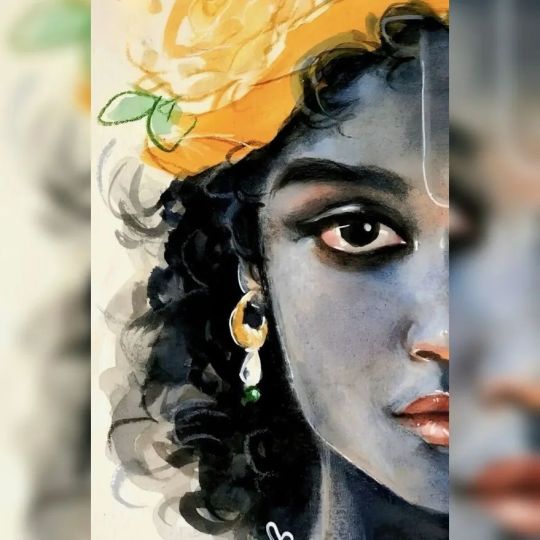
Yada Yada hi Dharmasya Glanirva Bhavati Bharatha Abhiyuthanam Adharmasya Tadadmanam Srijamyaham Parithranaaye Sadhunaam Vinashaya cha Dushkritaam Dharma Sansthapanathaya Sambhavami Yuge Yuge. Everytime there’s loss of dharma and increase in adharma on the Earth with increase in the number of sinners and rise of the evil to protect the pure souls and for re-establishing the declining dharma I shall take form from time to time. #dharma #krishna #krishnalove https://www.instagram.com/p/Cp8itZHy4a2/?igshid=NGJjMDIxMWI=
0 notes
Text
यदा यदा हि धर्मस्य ग्लानिर्भवति भारत। अभ्युत्थानमधर्मस्य तदात्मानं सृजाम्यहम् ॥४-७॥
परित्राणाय साधूनां विनाशाय च दुष्कृताम् । धर्मसंस्थापनार्थाय सम्भवामि युगे युगे ॥४-८॥
The complete verse is "yada yada hi dharmasya glanir bhavati bharata, abhyutthanam adharmasya tadatmanam srjamy aham," and it is spoken by Lord Krishna. In English, it can be translated as: "Whenever there is a decline in righteousness and an increase in unrighteousness, O Arjuna, at that time I manifest myself.
yada yada hi dharmasya glanir bhavati bharata abhyutthanam adharmasya tadatmanam srjamy aham यदा यदा हि धर्मस्य ग्लानिर्भवति भारत ।अभ्युत्थानमधर्मस्य तदात्मानं सृजाम्यहम् ॥परित्राणाय साधूनां विनाशाय च दुष्कृताम् ।धर्मसंस्थापनार्थाय सम्भवामि युगे युगे ॥
This verse was recited by Lord Krishn to Arjun as a part of Geeta:
He says that whenever Dharma is taken over by Adharma on the Earth, Hey Bharat (Bharat is the name used for Arjun as he was a descendant of King Bharat), then I take birth on The Earth. I take birth for safety and for defending the sadhus, and the good ones, and for the destruction of the evil. I take birth for the re-establishment of Dharma.
Bhagavad Gita Quotes by Lord Krishna on Life Lessons for peace and successful life: गीता के इन 5 अनमोल वचन में छिपा हैं सफलता की कुंजी का राज, रहेंगे हमेशा खुशहाल
Bhagavad Gita Quotes by Lord Krishna on Life Lessons for peace and successful life: गीता के इन 5 अनमोल वचन में छिपा हैं सफलता की कुंजी का राज, रहेंगे हमेशा खुशहाल


Image Source : INSTAGRAM/_O_KRISHNA गीता उपदेश
श्रीमद्भगवतगीता में जो भी उपदेश दिए गए हैं हर एक वचनमें जीवन का एक सार छिपा हुआ है। जिस व्यक्ति ने इसे जान लिया वहीं व्यक्ति हमेशा सफलताओं की सीढ़ी में चढ़ता चला जाता है। गीता के इन वचनों के बारे में हर एक व्यक्ति को जानना बहुत ही जरूरी हैं तभी इंसान सही राह में चलकर खुशहाल जीवन जी सकता है। इसी क्रम में हम आज आपको बताने जा रहे…
View On WordPress
4 notes
·
View notes
Photo

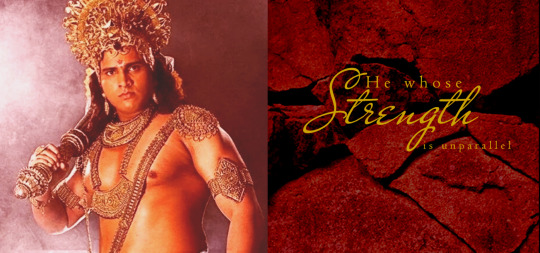
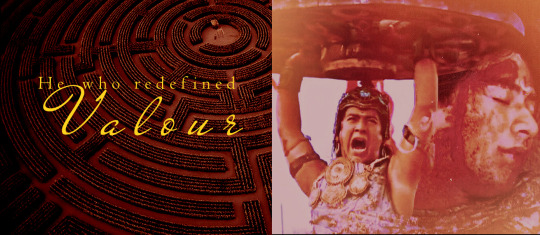
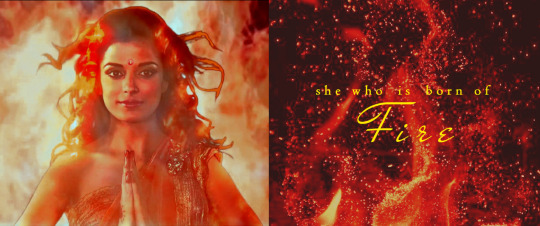
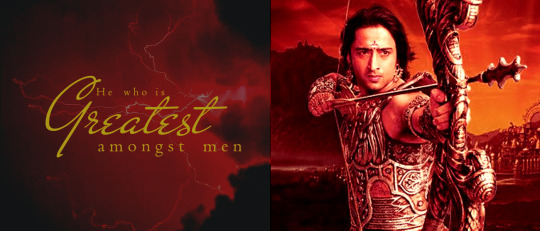
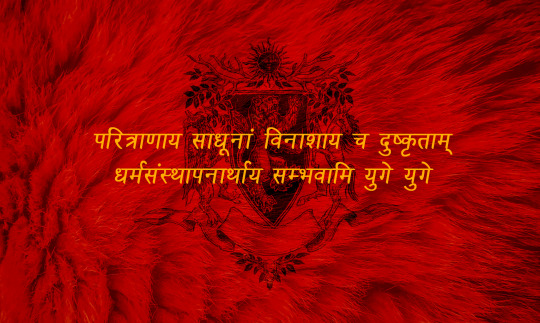
Harry Potter and Mahabharat Crossover: Gryffindor
From the Top: Pandav Bheemsen, Veer Abhimanyu, Empress Draupadi and Maharathi Arjun
Quote:
परित्राणाय साधूनां विनाशाय च दुष्कृताम् । धर्मसंस्थापनार्थाय सम्भवामि युगे युगे
Translit: Paritranaya sadhunang vinashay cha dushkritam. Dharmasang sthapanarthay sambhabami yuge yuge. -- Bhagavat Geeta (Chapter 4: verse 8)
Meaning: For the protection of the good, for the destruction of evil-doers, For the sake of firmly establishing righteousness, I am possible in every age.
This Shlok is a part of Mahabharat OST. Listen to it here: https://www.youtube.com/watch?v=oS3u9wUu8vY
Tags
@decadentdeputyturkeyfan @yeoldguccislides @silencespeaks10 @beyzaarikan @hopingtoleave @debranjansinha @astrologyreadings @astrologyreadingsforlife-blog @seanromerovaldezblack @queenphoenixfire @atomiccrystalsblog @solare19 @jollyfarmweaseldonkey @theauthor97 @emmavalley @ibuprofenforthesoul @detectivepeeks @lemonfields12234 @ravenclaw-nonsense @ice-princess555 @ghastedpoetic @nivzzz @amara-airgid @thehorcruxstolemysoul @cartoon-lover101 @yellowbadger07 @thisisallicouldthinkof @constantly-in-limerence @adam-papa @amiaslytherinoramijustasnake @alliedolls00 @mothenarwhal @tattooedkermit @king-hsssy @n-a-romanovaa @bunchofdrabbles @rverfades @hallu-cin-ations @askhindumyths @jukti-torko-golpo @the-poet-who-bleed-her-agony
#harry potter#harry potter edit#mahabharat edit#mahabharat#harry potter crossover#harry potter mahabharat#arjun#draupadi#panchali#bheem#abhimanyu death#abhimanyu#gryffindor#gryffindor quotes#bhagavat gita quotes#yada yada hi dharmasya
62 notes
·
View notes
Link
चौंकने वाली बात है, कि जिस व्यक्ति ने, युद्द के दौरान, शस्त्र न उठाने का वचन लिया हो, वो युद्द मैं, किसी के संहार की बात कैसे कर सकता है ?, मैं यहाँ तर्क करूँगा तो आप कहोगे कि, कृष्ण तो भगवान् थे,, मैं भी मानता हूँ, कृष्ण भगवान् ही थे, पर आजकल वो इंसानों के पचड़ों मैं क्यों नहीं पड़ते ? कहीं ऐसा तो नहीं, कि कृष्ण के ज्ञान को, हमारे मीडियेटरों ने तोड़ मरोड़ कर बताया है, नीचे Link पर क्लिक करके, तर्क का जवाब जानें
Next to reading Yada Yada Hi Dharmasya
0 notes
Text









Vishnu
Yada-yada hi dharmasya
Glanir bhavati bharata,
Abhyutthanam adharmasya
Tada’tmanam sṛjamy aham
Paritraṇaya sadhunam
Vinasaya ca duṣkṛtam,
Dharmasansthapanarthaya
Sambhavami yuge yuge
#moodboard#aesthetic#original post#vishnu#hindu god#hindu mythology#yellow#blue#yellow and blue#blue and yellow
67 notes
·
View notes
Text
omg yes aurum yada yada hi dharmasya
3 notes
·
View notes
Photo
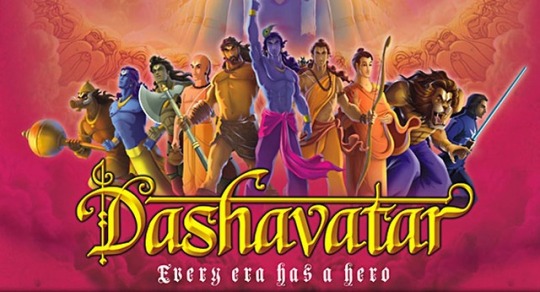
Yuga Dharma of Yuga Purusha ((Horses for courses!) (my essay for 'Oxford Centre for Hindu Studies')
Ramayan and Mahabharata have Vishnu playing the central role of Yug-Purush – man-of-the-hour who decides the fate of the world, formulates history and decides the course of the future.
Yet, Vishnu-avatar in Ramayan is very different to the Vishnu-avatar in the Mahabharata. Both itihases (histories) record how ‘god-incarnate’ behaves in a totally diametrically opposed manner. One has to wonder why!
In fact when we examine the 24 avatars of Vishnu, each one seems to be very different! Their ways of establishing Dharma seem to very widely. For example, Parashuram, Varah and Narsimha are exceptionally fierce where as Rushabh and Nara-Narayan are exceptionally placid.
Why is God not behaving in a consistent manner? Why are God’s actions not predictable? Why is God not behaving like GOD?
For the purposes of this essay, we will mainly look at Ramavatar and Krushnavatar, discussing other avatars to understand what is means to be a Yug-Purusha and uphold Yug-Dharma.
Shri Rama of Ramayan is very ‘human’. In Valmiki Ramayan, Rama rages, cries, despairs and even blames his father’s lust for the miseries visited upon him. Rama’s resolve to fight Ravana is unswerving, but his despondence during setbacks in his life are endearingly ‘human’. His rejection of Sita is shockingly melodramatic and his desperate desire to please-everyone-all-the-time is achingly admirable – though frustratingly impossible! Rama is admired as the son, brother, leader, friend everyone wants. Yet, his behavior as a husband, father and king leaves us aghast.
By contrast, Shri Krushna of Mahabharata is rarely despondent. His relatives are far more troublesome than those of Rama, and yet he rarely gets upsets or admonishes them for their lack of propriety. He weaves through the quagmire of complex relationships with hundreds of characters in the epic. He adheres to rules, bends them, breaks them and makes them up as he goes through life. His focus on establishing a ‘Dharma-Rajya’ in Arya-vart is unwavering and despite setbacks, he marches forward with this singular aim. Though incredibly complex, Krushna remains the most enigmatic and interesting of all the Vishnu avatars.
Establishing Dharma is the key to all avatars of Vishu. But what we have to ask is, What is dharma? Whose dharma? Which dharma?
Does the Yuga Purusha determine what the Yuga-Dharma should me? Does the Yuga Dharma determine what the Yuga-Purusha should establish as the law of the land?
Rama was the latter – he followed the Yuga-Dharma to the letter. Krushna was the former – he decided what the Yuga-Dharma was and made sure others helped him establish it!
In the SMB Gita, chapter IV, shloak 7, Shri Krushna states, ‘Yada yada he Dharmasya, glanir-bhavati Bharata, abhyuthanama dharmasy, tadatmanum srujamyahum’. This can be paraphrased as ‘Oh Arjun, whenever Dharma is impacted, I come to its rescue.’
Dharma’s principles may be eternal, but its application in the here-and-now is fluid. Each Yuga has its own version of what is the ideal way to practice dharma. Dharma, as interpreted by rishis, kings and citizens seems to be different. If we look superficially, with the change of a Yuga, dharma seems to change. God’s own enforcement of Dharma seems to changes. These enforcements are sometimes violent, sometimes peaceful, sometimes mysterious. But each and every time, the result is the same. Dharma and order are re-established. This can be succinctly described by the English term, ‘horses for courses’. God does whatever is required to establish Dharma.
Everytime Yuga-Purusha comes, ALL sections of society are forced to confront their excesses, account for it, repent and re-establish social-order by leading a balanced life in accordance with Dharma. *The intellectuals have to climb down from their ivory towers and engage with the wider community. *The ruling class has to restrain itself from excessive use of its powers and let the citizens lead a fulfilled life. *The entrepreneurs and businessmen have to rein in their relentless pursuit of profit and realise that anything other than a fair-deal is robbery by any other name. *The working class have to realise the value of their work and relish ‘work’ rather than see it just as a toil of a mindless automaton.
No one is above Dharma. As part of the rituals of coronation of ancient Indian kings, after he receives the sword-of-state and the royal crown, the king proclaims, “A-dandyosmi!” (I am now above all reproach / oversight / punishment). The Raj-Guru gently taps the crown three times and reminds him, “Dharma dandosi, dharma dandosi, dharma dandosi!” (Dharma can still punish you!) In English courts, we use a similar maxim, written by Dr Thomas Fuller in 1733, “Be you never so high, the law is above you!” Even the law makers are not above the law! Recently, in the British Parliament, the government and the Priminister had to be reminded that they are not above the law – ‘Dharma dandosi’ enacted in 2019!
Only when every section of society benefits and progresses, can Dharma (in its widest sense) be truly established. God does not work for one side or another. God has no ‘favourites’. God favours equilibrium. Hence, to establish Dharma, is to establish balance. Dharma is impartial. God is impartial. When required, God comes as an axe-yielding ParashuRama and when required, he comes as a peaceful preacher – Horses for Courses.
No one lives in isolation. We all live in symbiosis. When one party tries to rise at the expense of others, crushes the rights of others to benefit itself, they disturb the delicate balance of Dharma. When that ‘balance’ swings too far to one side, it results in oppression of the ‘powerful’ over the ‘powerless’. Who is ‘powerful’ verses who is ‘powerless’, changes from one Yuga to another, one place to another. Everyone has the chance to become ‘powerful’ at one time or another. Not just China or Russia, even nations as small as Britain and Japan have had the chance to occupy center stage in world history. What they do with their power determines their legacy. History will record if they were benevolent or malevolent ; cruel or kind ; progressive or regressive ; dharmic or adharmic while they ruled.
Just as too much sunshine can wither the crops and too much rain can drown it, even excess of ‘goodness’ can unbalance the universe. For example, Vishnu comes as Vamana to gently curb the ‘goodness’ of Bali and re-establish the power-balance between good and evil in the universe. To the casual observer, robbing Bali of his empire and pushing him in the Patala seems like an ‘own-goal’ by God! Here was an honest Danava, devoted to dharma and dedicated to the welfare of his subjects. Why remove him from power? But God wants to make sure everyone has their due and no one is deprived of their fair share. As stepbrothers, Devas and Danavas are both given fecund kingdoms to enjoy. Both places are equally good and they both reflect the characteristics of the people who were suppose to occupy them. But, when Patal tries to dominate Swarga or when Swarga tries to dominate Patal, universe becomes unbalanced. Through his avatars, God works hard to make sure no one is bullied into submission and everyone has the chance to enjoy their ‘place-in-the-sun’.
Changes in interpretation, and application, of Dharma are reflected with the symbolic ‘colours’ given to each avatar. *1 In Sat Yuga, the character of the avatar is described as ‘White’. In Treta Yuga, the avatar’s character is ascribed the colours Red and Yellow and by end of Dwapar Yuga, the avatar is described as ‘Dark (blue)’.
The White colour of the avatar symbolically reflects the simple, straight forward ideas and applications of Dharma in Sat / Kruta Yuga. Matsya, Hansa, Varah etc reflect the straightforward efforts God takes to establish of dharma.
In Treta Yuga, attributes of Vishnu’s avatars are described by colours Red and Yellow. At the start of the Treta Yuga, Vishnu has to be aggressive in forcefully applying Yuga Dharma – hence Red. ParashuRama is the angry version of God’s ‘justice’. Those who are found wanting, are judged and punished without waiting for lengthy ‘due process’. However, by the end of Treta Yuga, requirements from the avatar have changed and this is symbolically reflected by the colour ‘Yellow’. The ‘golden Avatar’ of Rama has regal poise. Rama patiently suffers ‘due process’ to establish Dharma-Rajya at great personal cost. He waits 14 long, lonely, arduous, years in the forest to sit on the throne and rule as Dharma-Raj. To the ‘golden avatar’, personal privations were nothing in comparison to ‘peace’ achieved during Rama-Rajya for the entire society. As a result, till date, Rama-Rajya is synonymous with Dharma-Rajya in South-East Asia. Hence, from North India to Cambodia, there are several cities with the name ‘Ayodhya’ and countless rulers with the name ‘Rama’.
During the of Rama-avatar, ParashuRama symbolically passes the mantel of Yuga-Purusha to Rama by handing over his bow to Rama. The Red, angry Avatar of Vishnu, who as a Rishi’s aggrieved son had decimated Kshatriya clans 21 times over, hands over the job of maintaining Dharma to a Golden Kshatriya prince! It is a dramatic, diametric change. From Rishi-Putra killing Kshatriyas to forcefully establish dharma, to a Kshtriya killing a Rishi-Putra (Ravan) to reluctantly establish dharma. From an extrovert, dynamic avatar who imposes his will on the people, to an avatar who is painfully introverted, who tries desperately to establish dharma through consensus. They both cause a lot of bloodshed, but one relishes the bloodletting, while the other abhors it. ParashuRama feels that violence is the only way to keep the ruling class in check, while Rama seems to reserve violence as the last option to check unruly rulers (eg Vali and Ravana).
In Dwarpar Yuga, God’s enigmatic application of Dharma has literally become ‘dark’, impenetrable! By the time of Krushna, cycle of Yuga has marched on. God incarnate has to use multiple approaches to bring peace in society. Though not exclusively, this does include using a great amount of violence to establish Dharma. Shri Krushna uses the full range of Sama, Dama, Danda and Bheda to reestablish Yuga Dharma. By using diplomacy, economic pressure, army and ‘intrigue’, he manipulates the political environment of the era to bring about peace. Though he never sits on any throne or claims any crown, he is openly acknowledged as the king-maker of the epoch.
While ParashuRama is an outsider, forcing the rulers to bend to his will, Rama is an insider, coaxing fellow rulers to his will. Both feel the process changes them. They start out enthusiastically, but end up bitterly ruing their role in bringing order to the world. Krushna however works as a catalyst, working tirelessly to ferment change without changing himself. Even as empires rise and fall around him, Shri Krushna smiles knowingly, always enchanting everyone around him. God’s singular purpose of coming as an Avatar is to liberate all the souls that come within his / her ambit. Through wise words and wars, God aims to cut karmic bondage of any and all those who meet them.
How is the use of violence justified for establishing Dharma by Yuga purusha? How can a dharma-avatar use something so adharmic as violence to establish dharma? Is everything fair in love, war and establishment of dharma?
God is compassionate. When God kills, s/he liberates the souls s/he kills. God removes the karmic bonds of those who die in his presence. Thus they are freed from the need to be reborn. Just as fire reduces everything to ash – burning sandalwood and a thorn bush with equal vigour, dying in God’s presence helps sever the good and bad karmas of the soul. Unfettered by their karmas, souls that die in the presence of God attain moksha. This reduces the number of souls who ‘burden’ Mother Earth. This helps achieve the goal of any avatar. Even Buddha-Avatar’s goal was to release souls from the samsara and lead them to nirvana.
Taking his cue from Rama and Krushna, both warriors par-excellence, Mohandas Karamchand Gandhi renounced violence and defeated the biggest empire the world has ever seen with ‘non-violence’! Taking account of ground realities, though he invokes the ancient avatars of Vishnu, he used different tactics to establish order and Yuga-Dharma in Kali Yuga. Taking inspiration from Vishnu, the sustainer of the universe, Gandhiji helped re-establish dharma, bring back balance, humble and empower the ruler and the ruled alike, and establish a level playing field for both. Man became a Mahatma, creating a new definition of Yuga-Dharma.
In each Yuga, the subtle application of dharma changes. Yuga-Avatar establishes Yuga-Dharma and releases the maximum number of souls it can during its ‘karya-kala’ (time while the Avatar is active on Earth) from their karmic bondage. Shri Rama and Shri Krushna, along with other avatars of Vishnu, have helped re-balance the universe, bring peace and establish Dharma. How they did this (abhyuthanama dharmasy) was unique to each of them.
5 notes
·
View notes
Text
Download the ringtone Yada Yada Hi Dharmasyawith great tunes right now | RingtonesCloud
Install and express yourself with the best Yada Yada Hi Dharmasya ringtones
https://youtu.be/XM7iudyU1AU
Link download: https://ringtonescloud.com/
#RingtonesCloud #free ringtones #yada yada hi dharmasya
0 notes